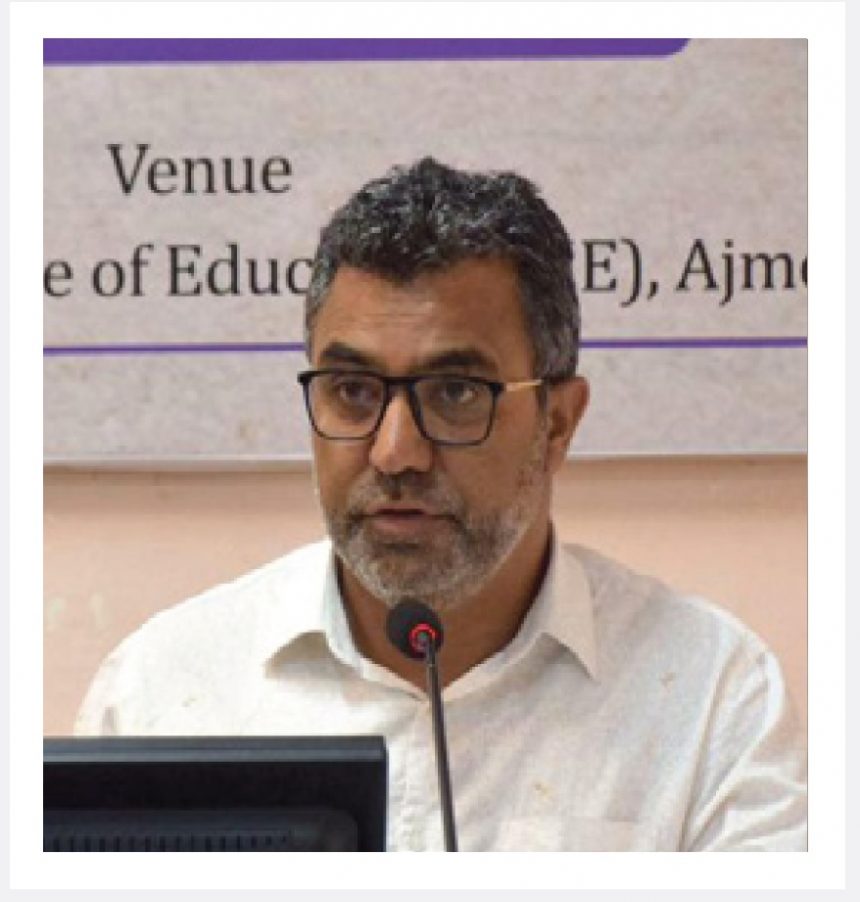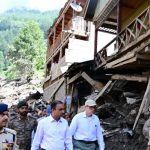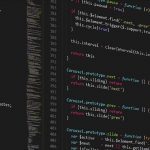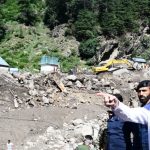As we navigate through the 25th year of the 21st century, the traditional chalk-and-talk methodology that once defined classroom instruction is giving way to a more dynamic, learner-centric approach. This transformation, particularly evident in the region’s foundational education system, represents a paradigm shift that could serve as a model for educational reform across India.
Breaking Traditions: The Evolution of Jammu & Kashmir’s Classrooms
“The traditional teacher-centric model where knowledge flowed in one direction is now obsolete,” says Prof.(Dr.) Parikshit Singh Manhas, Director State Council of Educational Research and Training(SCERT-JK). “We’re witnessing a fundamental shift in how we perceive education, especially in the crucial foundational years.”
This transformation couldn’t have come at a more critical time. Recent Training Need Analysis(TNA) conducted by the J&K State Council of Educational Research and Training (SCERT) indicate that the first eight to nine years of a child’s life are pivotal in determining their future success. This understanding has catalyzed a complete overhaul of the region’s educational approach.
The journey of educational transformation in Jammu & Kashmir mirrors a larger national movement, but with unique regional characteristics. Shri roshan Lal, Joint Director,SCERT-KD, Srinagar, reflects, “Looking back, we realize how limiting our previous approach was. We’ve moved from creating excellent memorizers to developing critical thinkers and problem solvers,during our capacity building programmes.”
Mother Tongue: The Foundation of Learning Excellence
One of the most significant changes has been the emphasis on mother tongue-based instruction in early years. Shabir Hussain Shabir, a leading L1 and L2 expert at the SCERT-KD, explains: “Research consistently shows that children learn best in their mother tongue. In our diverse linguistic landscape, this approach has shown remarkable results in improving learning outcomes.”
The implementation of mother tongue-based instruction has required innovative solutions. Local educators have developed multilingual teaching materials, while community elders serve as language resources, helping preserve linguistic heritage while advancing educational goals.
Community as Classroom: Redefining Educational Boundaries
The new educational paradigm recognizes that learning extends beyond classroom walls. Ms Asima, a teacher educator in Barahmullah, describes their innovative approach: “In our village, we’ve created ‘learning circles’ where different community members contribute to children’s education. A local carpenter teaches basic mathematics through his work, while a grandmother shares traditional stories that carry important life lessons.”
This community-based approach has transformed the traditional teacher-student relationship. Teachers now serve as facilitators, guiding students through experiential learning opportunities that connect classroom concepts with real-world applications.
Innovation in Action: The Flipped Classroom Revolution
The flipped classroom model has emerged as a particularly successful innovation in J&K’s schools. Riyaz Ahmad Dar, Sr.Academic officer, in SLA (SCERT-KD), explains their unique adaptation: “We’ve developed a hybrid model that combines traditional methods with modern approaches, making it accessible to all students regardless of their socioeconomic background.”
This hybrid approach includes:
– Pre-recorded lessons shared through community learning centers
– Interactive classroom sessions focused on practical application
– Peer-led learning groups
– Community-based projects that connect theory with local needs
Challenges and Triumphs: Navigating Educational Change
The transformation hasn’t been without its challenges. Infrastructure limitations, teacher training needs, and initial resistance to change presented significant hurdles. However, the region’s educators have shown remarkable resilience and creativity in addressing these challenges.
Shri Ham Raj Pakhroo, Joint Director Central SCERT-JK, emphasizes the importance of teacher development: “Our teachers are the backbone of this educational transformation. We’ve initiated comprehensive training programs that focus not just on new teaching methodologies but also on developing emotional intelligence and cultural sensitivity.”
Digital Dawn: Technology’s Role in Jammu & Kashmir’s Education
While technology plays a crucial role in modern education, J&K’s approach has been balanced and culturally sensitive. Mr Azad Hussain Bukhari, an educational technology expert at SCERT-KD, explains: “We’re not implementing technology for technology’s sake. Our focus is on meaningful integration that enhances learning while preserving our cultural values.”
The region has developed innovative solutions to technological challenges, including:
Local educational content development
Hybrid learning models that combine digital and traditional approaches
Assessment Reimagined: Beyond Traditional Testing
Traditional examination systems have given way to more comprehensive assessment methods. The new approach focuses on continuous evaluation, portfolio development, and practical skill assessment. Dr. Sajad Ahmad, Head ERSA of SCERT-KD, notes: “We’re not just preparing children for exams; we’re preparing them for life, through the holistic development of foundational stage teachers.”
The new assessment framework evaluates:
– Critical thinking and problem-solving abilities
– Social and emotional development
– Cultural awareness and sensitivity
– Practical application of knowledge
– Communication and collaboration skills
Vision 2026-27: Charting the Course for Excellence
The government’s vision for achieving educational benchmarks by 2026-27 is ambitious but achievable. The plan focuses on universal access to quality early childhood education, complete enrolment and retention, and the achievement of grade-level competencies.
Gulzar Ahmad Dar, Senior Academic Officer EPM&M at SCERT-KD, notes: “We’re creating a system that prepares our students for global citizenship while maintaining their cultural roots.”
Impact Analysis: Early Signs of Success
Early results from this educational transformation are encouraging. Recent assessments show improved student engagement, better retention of concepts, enhanced critical thinking skills, and increased parent satisfaction.
Shabnam Ara, a parent from Kupwara, shares: “I’ve seen a remarkable change in my daughter’s approach to learning. She’s not just memorizing facts anymore; she’s asking questions, exploring ideas, and showing genuine curiosity about the world around her.”
Research and Innovation: Building Tomorrow’s Education
A strong emphasis on research continues to drive improvement in educational practices. Collaboration between universities, teachers, and community members ensures that educational methods remain relevant and effective.
The research focuses on:
– Learning outcome improvements
– Community impact assessment
– Teaching methodology effectiveness
– Cultural integration in education
The Road Ahead: Shaping Future Generations
The transformation of education in Jammu & Kashmir represents more than just a change in teaching methods; it’s a fundamental shift in how we perceive learning and development. The success of this initiative depends on continued commitment from all stakeholders and the ability to adapt based on emerging needs.
Looking forward, key priorities include:
Strengthening community participation
Expanding access to quality education
Enhancing teacher training programs
Developing locally relevant educational content
Building stronger school-community partnerships
Conclusion
As Jammu & Kashmir continues its educational transformation journey, the region serves as a model for how traditional wisdom can be combined with modern innovation to create an effective, culturally sensitive education system. The success of this initiative demonstrates that with commitment, creativity, and community involvement, significant educational reform is possible even in challenging circumstances.









